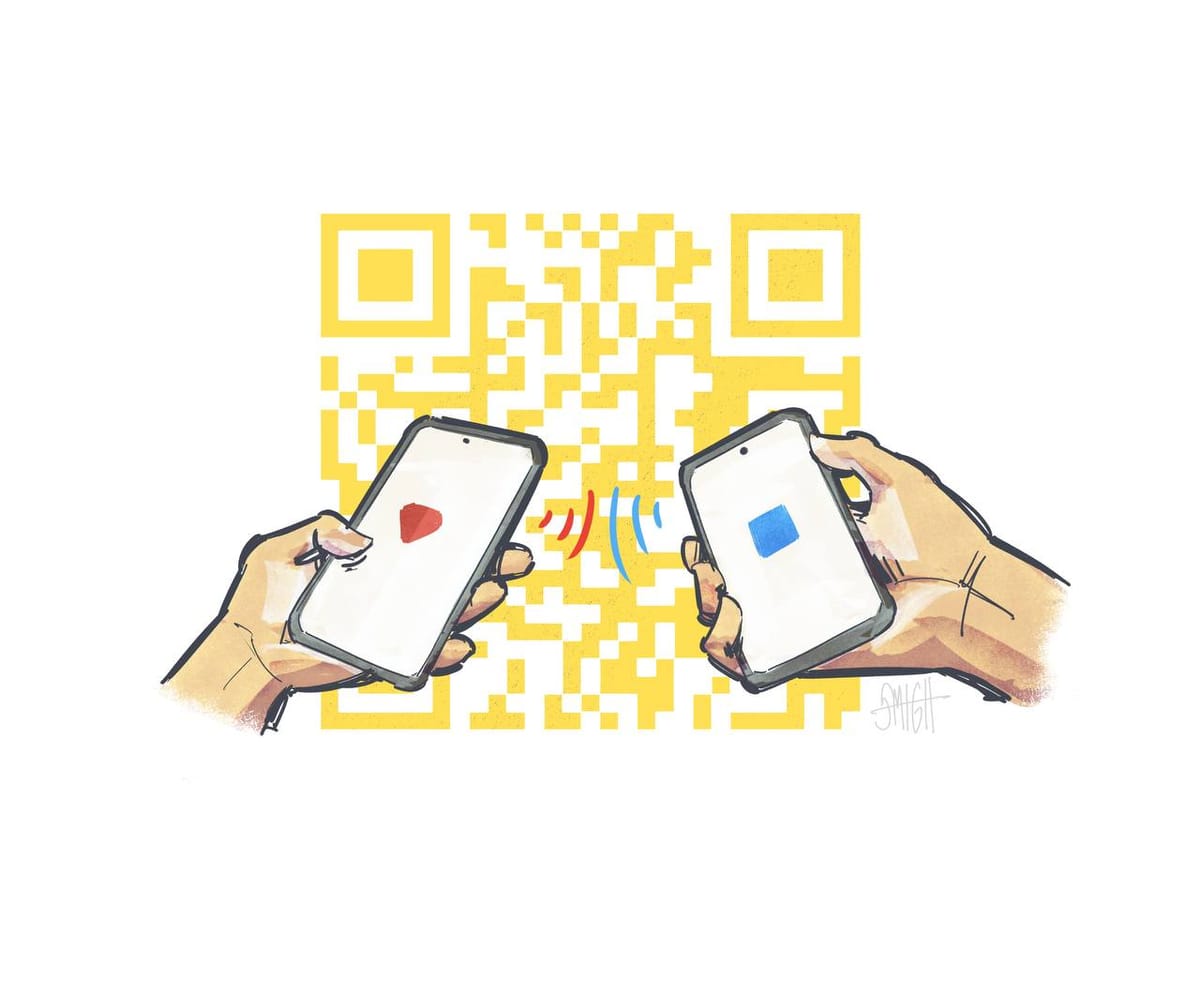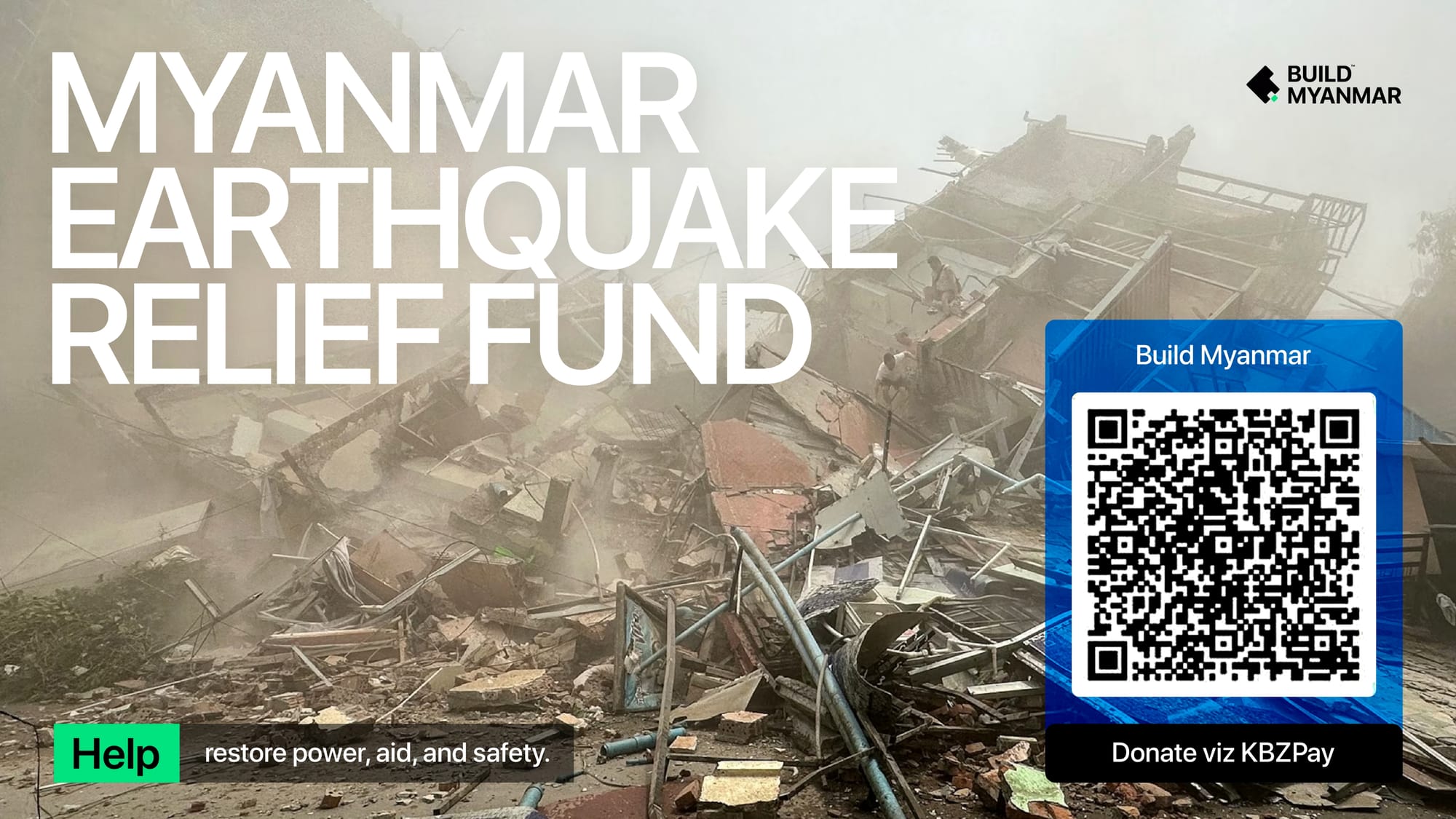
The State Administration Council (SAC) introduced the digital payment system MMQR on February 27, 2025, at MICC 1 in Naypyidaw. The fact that SAC Chairman Senior General Min Aung Hlaing personally attended and inaugurated this ceremony indicates the level of expectations placed on this system.
So what is the MMQR system?
Can the MMQR system help with government management that's struggling with budget deficits, inflation, and currency printing?
Another question is how this system will impact Myanmar's financial sector, as it emerges at a time when people's trust in cash is declining and they are dissatisfied with banking services.
What is MMQR?
MMQR (Myanmar Quick Response) is a Digital Payment Switch system that supports QR code-based payments.
This means that unlike KPay or AYAPay, the MMQR system itself cannot process payments directly. However, if you have any of these payment services (KPay, AYAPay, or others), you can use them with MMQR.
The system is supervised by the Central Bank as the System Operator and is operated by Payplus Company.
The advantage of the MMQR system is that previously, banks only provided services within their own networks. For example, you couldn't transfer money from KPay to AYA Pay or vice versa. Therefore, a person needed to maintain multiple accounts across different Pay services to use them conveniently. This system will interconnect separate mobile wallets, making it more convenient for users.

Join Build Myanmar's Earthquake Relief Effort
We urgently invite to unite with Build Myanmar in supporting those affected by the devastating earthquake. Your contribution, no matter how small, can make a significant difference to families in crisis.Together, we can help our communities rebuild.
For example, let's say you're dining at a restaurant with friends and need to settle the bill. The restaurant only accepts KPay, but you only have AYAPay. This would typically be problematic. However, with the MMQR system, such situations will be easily resolved.
Origins and Development
The MMQR system was reportedly being prepared since the NLD government era. The NLD government's successful implementation of mobile money transfers for COVID-19 support payments at the national level demonstrated the potential viability of this program. In December 2019, the Central Bank had already announced the initial implementation of the MMQR system in a "Digital Economy Facts" broadcast on Myanmar TV.
In June 2024, the SAC pushed forward with implementing the MMQR system. The Central Bank's directive on June 10, 2024, announced the use of digital currency and digital payment methods to avoid inflation and currency printing.
Thus, the MMQR system has now emerged in February 2025.
Current Capabilities
The MMQR system is connected with AYA Pay, KBZ Pay, Wave Money, OK$, CB Pay, UAB Pay, A+ Wallet, CTZ Pay, Yoma, Trusty, Zego, and Mpitesan. Therefore, if you have any of these mobile payment services, you can now use the MMQR system. More mobile money services are expected to join in the future.
To further clarify, the MMQR system will enable interconnected payments between separate mobile payment services. Initially, it will support customer-to-merchant payments using MMQR. Merchants will need to officially register to participate.
Current Limitations
The MMQR system currently cannot handle person-to-person (P2P) money transfers. However, it's reported that work is being done to enable this feature in the future.
Additionally, officials have stated that they plan to expand MMQR services to include tax payments like water bills and meter bills, government operations like salary payments to civil servants and pension disbursements, and private sector activities including small businesses, fuel stations, private hospitals, schools, and consumer goods businesses.
Advantages and Future Prospects
Simplicity and Convenience - The main advantage of the MMQR system will be its simplicity and convenience. While multiple mobile wallets/mobile pay services were previously needed for payments, now having MMQR will streamline the process.
Rapid Spread - Since it's a mobile payment system that only requires a mobile phone, it can quickly spread even to rural areas.
Integration with Government Services - Once MMQR can be used for staff salaries, retirement pensions, and various taxes, it will make tax payments easier for the public and tax collection more efficient for the government.
Using digital payment methods in national-level economic projects could reduce the cost of printing and distributing cash. Moreover, it should be upgraded for future use in citizen verification, voter registration, voting, and educational services.
Fast Money Flow - Faster money flow will make conducting business easier. When it can be used in small businesses, it could contribute significantly to economic development.
Digital Currency System Activation - The MMQR system may reduce cash handling and activate the digital currency system more effectively. As the digital currency system becomes more active, costs associated with printing and distributing cash will decrease, and inflation may also reduce. Additionally, it could help prevent counterfeit currency circulation.
Cross-border Payments - The system will be nearly complete once it can handle international payments. As a first step, there are plans to implement QR-based money transfer systems connected with ASEAN countries.
AI Integration - While connecting MMQR with artificial intelligence is currently unlikely, it's not impossible. Once AI integration is achieved, it could manage data, which could be used to implement projects, deliver public services, and conduct reviews for improvements.
Challenges
Internet - The most crucial requirement for the MMQR system is good internet connectivity. The system can only become fully operational as envisioned when internet infrastructure is upgraded to reach rural areas.
Education - There needs to be widespread public education about how to use the MMQR system, how to protect personal information, and other important aspects.
Data Security - This is a technical challenge for the MMQR system. The system needs to be upgraded to protect against malicious actors. Data security becomes increasingly important as the number of users grows.
Incentives - It's believed that incentives will be necessary for the digital payment system to take off in Myanmar. For example, if a 5% commercial tax is charged for cash payments, the tax rate could be reduced for digital payments or MMQR payments. Similar approaches could be considered even if not exactly in this form.
Trust and Transparency - This is both the most important requirement and biggest challenge for successful MMQR implementation. The authority and role of private businesses involved in the MMQR implementation process should be clearly and transparently explained to the public. Furthermore, the government must lead by example to build public trust in its MMQR implementation.
The MMQR system will only succeed if it's transparent and trusted by the public.
Regardless, MMQR fills a gap in the digital payment system currently used by people in Myanmar. It could also be a new step in digital payments. How far this step can go, how successful or unsuccessful it might be, remains to be seen.
By Han Thit Eain (Y3A)
 Build Myanmar - MediaY3A
Build Myanmar - MediaY3A
 Build Myanmar - MediaY3A
Build Myanmar - MediaY3A
Build Myanmar-Media : Insights | Empowering Myanmar Youth, Culture, and Innovation
Build Myanmar-Media Insights brings you in-depth articles that cover the intersection of Myanmar’s rich culture, youth empowerment, and the latest developments in technology and business.
Sign up for Build Myanmar - Media
Myanmar's leading Media Brand focusing on rebuilding Myanmar. We cover emerging tech, youth development and market insights.
No spam. Unsubscribe anytime.
Sign up now to get the latest insights directly to your mailbox from the Myanmar's No.1 Tech and Business media source.
📅 New content every week, featuring stories that connect Myanmar’s heritage with its future.
📰 Explore more:
- Website: https://www.buildmyanmarmedia.com/
- Facebook: https://www.facebook.com/buildmyanmar
- YouTube: https://youtube.com/@buildmyanmarmedia
- Telegram: https://t.me/+6_0G6CLwrwMwZTIx
- Inquiry: info@buildmyanmar.org
#BuildMyanmarNews #DailyNewsMyanmar #MyanmarUpdates #MyanmarNews #BuildMyanmarMedia #MyanmarNews #GlobalNews #TechNewsMyanmar #BusinessNewsMyanmar #Updates #Insights #Media
